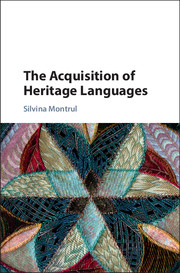Book contents
- The Acquisition of Heritage Languages
- The Acquisition of Heritage Languages
- Copyright page
- Contents
- Figures
- Tables
- Book part
- 1 Introduction
- 2 Heritage languages and heritage speakers
- 3 The language of heritage speakers
- 4 The bilingual development of heritage speakers
- 5 Theoretical approaches
- 6 Methodological considerations
- 7 How native are heritage speakers?
- 8 Are heritage speakers like second language learners?
- 9 Some implications
- References
- Index
- Author index
- References
References
Published online by Cambridge University Press: 05 December 2015
- The Acquisition of Heritage Languages
- The Acquisition of Heritage Languages
- Copyright page
- Contents
- Figures
- Tables
- Book part
- 1 Introduction
- 2 Heritage languages and heritage speakers
- 3 The language of heritage speakers
- 4 The bilingual development of heritage speakers
- 5 Theoretical approaches
- 6 Methodological considerations
- 7 How native are heritage speakers?
- 8 Are heritage speakers like second language learners?
- 9 Some implications
- References
- Index
- Author index
- References
- Type
- Chapter
- Information
- The Acquisition of Heritage Languages , pp. 311 - 348Publisher: Cambridge University PressPrint publication year: 2015



